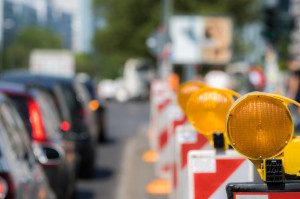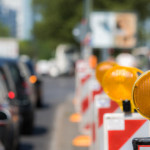Staying Safe in Stop-and-Go Traffic: Essential Tips for Your Road Safety
Navigating stop-and-go traffic is a common experience for many drivers, especially during peak hours or in busy urban areas. While it may seem like a mundane part of driving, ensuring your safety in these conditions is crucial. Here’s a guide to help you stay safe and make the most of your time on the road.
like a mundane part of driving, ensuring your safety in these conditions is crucial. Here’s a guide to help you stay safe and make the most of your time on the road.
Understanding the Risks
Stop-and-go traffic presents unique challenges. Frequent stopping and starting can lead to frustration and impatience, which may compromise your focus and decision-making. Additionally, the constant change in speed can increase the risk of rear-end collisions, as drivers may struggle to maintain proper following distances. Being aware of these risks is the first step in mitigating them.
Top Tips for Safe Driving in Stop-and-Go Traffic
1. Maintain a Safe Following Distance
One of the most important aspects of driving safely in stop-and-go traffic is keeping a proper distance from the vehicle ahead. The general rule is to maintain at least three seconds of following distance. This buffer gives you enough time to react if the vehicle in front of you suddenly stops or slows down. In congested conditions, this distance may need to be increased.
2. Stay Alert and Avoid Distractions
Distractions are particularly dangerous in stop-and-go traffic. Stay focused on the road and avoid activities like texting, adjusting your radio, or eating. Keeping your attention on the traffic flow will help you respond more effectively to sudden changes and avoid potential accidents.
3. Use Your Vehicle’s Features Wisely
Modern vehicles come equipped with a range of safety features that can be particularly useful in stop-and-go traffic. Adaptive cruise control, for example, can help maintain a safe following distance automatically. However, it’s essential to remain attentive and not rely solely on these features. Always use them as aids rather than replacements for active driving.
4. Smooth Acceleration and Braking
Sudden acceleration and hard braking can disrupt the flow of traffic and increase the risk of collisions. Practice smooth and gradual acceleration and braking to maintain better control of your vehicle and improve overall traffic flow. This also reduces wear and tear on your vehicle and enhances fuel efficiency.
5. Keep an Eye on Surroundings
Pay attention to your surroundings, including the behavior of other drivers and potential hazards. Look out for vehicles merging into your lane, pedestrians crossing the street, and any obstacles on the road. Being aware of your environment can help you anticipate and react to potential issues before they become problems.
6. Avoid Aggressive Driving
In stop-and-go traffic, it can be tempting to weave in and out of lanes or tailgate to make up for lost time. However, aggressive driving increases the likelihood of accidents and road rage incidents. Stay calm and patient, and remember that driving aggressively is not only dangerous but can also lead to legal consequences.
7. Prepare for Emergencies
While following these tips can help prevent accidents, it’s also wise to be prepared for emergencies. Keep a roadside emergency kit in your vehicle, including items like a first aid kit, flashlight, and basic tools. Knowing that you’re prepared for unforeseen situations can help you stay calm and handle emergencies more effectively.
Why Safety in Stop-and-Go Traffic Matters
Ensuring safety in stop-and-go traffic is crucial for several reasons:
- Preventing Accidents: Maintaining a safe distance and avoiding distractions reduces the risk of collisions, which protects not only you and your passengers but also other road users.
- Minimizing Stress: Safe driving practices can help reduce the stress and frustration often associated with congested traffic. A calm driving experience contributes to better mental well-being.
- Enhancing Traffic Flow: Smooth driving and proper lane discipline contribute to a more efficient traffic flow, which can alleviate congestion and improve overall road safety.






